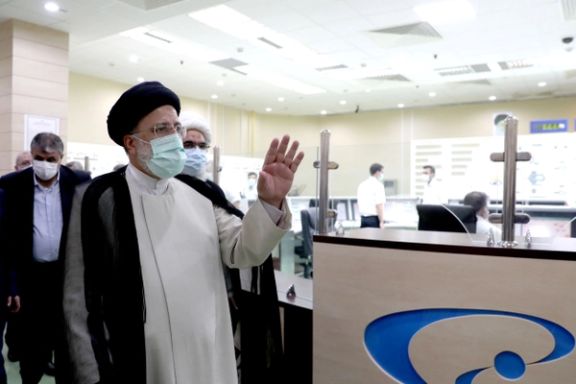Raisi Says Atomic Power Important For Iran’s Future

After visiting the Bushehr nuclear power plant Friday, President Ebrahim Raisi said that atomic energy would play an increasing role in generating electricity.

After visiting the Bushehr nuclear power plant Friday, President Ebrahim Raisi said that atomic energy would play an increasing role in generating electricity.
During his one-day visit to Bushehr, in southern Iran, Raisi (Raeesi) said the current 1,000-megawatt (MW) capacity of Iran’s sole nuclear power plant would be tripled with further development, and that the Atomic Energy Organization of Iran was committed to increasing production from nuclear power to 10,000 MW.
Construction began in 2017 on two new nuclear reactors, due for completion in 2024 and 2026 at Bushehr with a projected combined capacity of 2,100 MW. The work follows a 2014 agreement between Iran and Rosatom, Russia's State Atomic Energy Corporation, which carried out most of the construction of the first reactor and provided fuel when it began operating in 2011.
With electricity generation at around 50,000-56,000 MW in the past few years, rising no more than 2,000 MW a year, Iran has struggled to meet consumption that has been rising and is encouraged by subsidized prices.
With an annual average of 300 sunny days in over two-thirds of the country Iran has great potential for solar energy, but renewables including hydro-power account for 7 percent of Iran’s energy generation compared to 90 percent from natural gas.
It is not clear why the government does not invest in renewable energy instead of nuclear reactors, especially given the frequent occurrence of earthquakes in the country that could pose a ganger to nuclear plants.
Iran’s daily electricity consumption reached 64,000 MW June this year, leaving a shortfall of around 10,000 MW. With first international and later United States sanctions during most of the past decade, the government has struggled to renew ageing power plants and grid amid estimates that 10 percent of electricity is lost during transmission. Drought this this year has brought a reduction in hydroelectric power, 15 percent of which comes from dams.
The situation has resulted in higher electricity imports from neighboring countries and a reduction in electricity exports to limit outages in cities and damage to industries including agro-food.
There has been controversy over cryptocurrency mining, which makes heavy demand on electricity. Some argue that around 7 percent of global cryptocurrency mining takes place in Iran, due to one of the world’s cheapest electricity tariffs and the advantages e-currencies offer in enabling trade away from United States scrutiny. Estimates of energy demand from this miningrange from 300 MW to 3,000 MW.